
LISA DART – SURVIVAL POETRY AND THE VOICES OF EXPERIENCE
I interviewed Lisa Dart, finalist in the Grolier, Aesthetica and Troubadour Poetry Prizes and author of The Linguistics of Light (poems, Salt, 2008), Fathom (prose
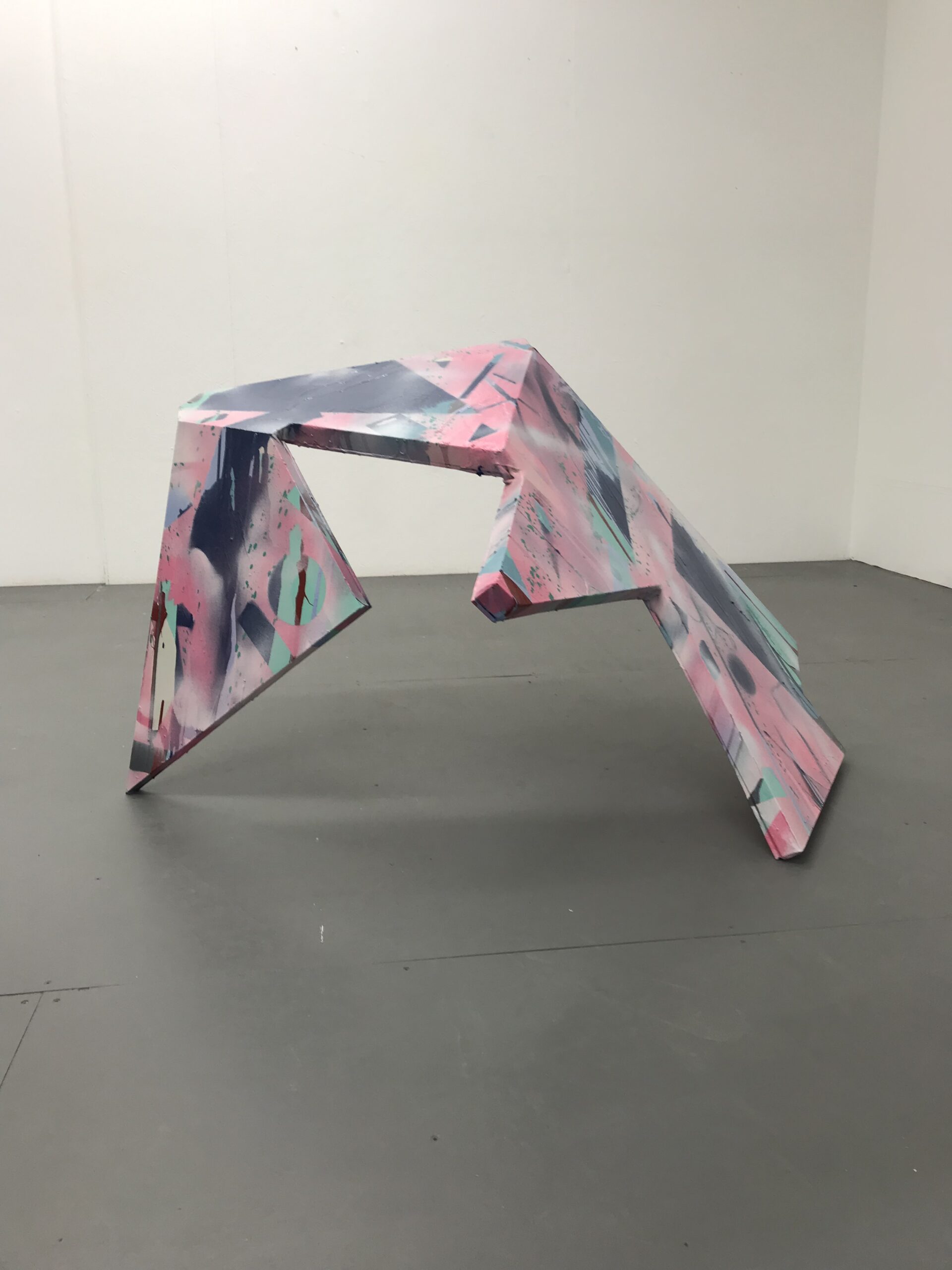

I interviewed artist Stuart Jones, who says about his work, “My paintings consist of layers of oil paint glazes, staining and pouring, spray paint applied with stencils and paint pens on canvas.” Stuart has been working as an artist for 20 years. His art explores, “Ideas of utopia, dystopia, heterotopia and the sublime… The Anthropocene and the climate crisis and current social and political issues feed my thinking.”
Leslie: How did you begin, grow and develop as an artist? What signs were there in your early life that you would embrace art? Who and what situations have helped you most on the way?
Stuart: I always loved to draw and paint from a young age, as a child I loved nature and the outdoors and this informed my drawings and paintings. I am from the North West of England which has a uniquely industrialised landscape, so this was what I drew when I went out sketching. I was lucky enough to go to a school that had a very good art department, and Wigan in the late 80’s/ early 90’s had a pioneering artist in residence scheme through a local gallery called Drumcroon. Through this I not only had passionate art teachers but ‘real life’ artists coming in to teach us who were exhibiting and making art for a living. This introduced the idea of being an artist as a possible vocation. In particular this came from one artist called Ian Murphy, who was very much engaged with drawing, painting and sketching ‘al fresco’. I will never forget going to an exhibition of his work which included his sketchbooks, and realising that he had drawn from the same places and vantage points that I had, obviously a lot more competently than I was capable of, but this really stuck with me. I soon realised I would like to study art, and I went on to study A-level- Art and then Fine Art at University, This was mainly down to my teachers and my Mum, who hadn’t studied at University and had no knowledge of the artworld, art education or the creative industries, but saw the potential and the passion that I had. She researched and found out about the Foundation Diploma in Art and Design (a crucial bridging course between A levels and University). I went on to experiment with a wide range of approaches and built a strong art portfolio enabling me to study art further.

Leslie: Can you describe the process of breaking up and reconstructing a typical piece of your artwork. Why do you use this technique?
Stuart: I began to use this process during the pandemic. During lock down I was restricted to working from home, and I was missing the space, freedom and solitude of my studio. However when I finally returned to the studio, the work I’d been making there changed, as I couldn’t access new materials or canvases. I started working intuitively by cutting up strips of canvas that I’d stained with paint, and using old paintings by cutting them up and collaging them together and stretching them onto unconventionally shaped stretcher frames. This was a bit of a breakthrough in my practice, forcing me to take risks and work in new ways. The paintings ‘Slip’, ‘Shelter’ and ‘Hole’ were a result of working in this new way.
Leslie: How do you put together artworks that ‘transgress the sanctity of the frame’, please? How do these pieces come to you?
Stuart: I was keen to push the boundaries of the conventional canvas and I experimented with different ways of ‘expanding’ my paintings to form 3D constructs. This ultimately led to the creation of ‘Shelter’ – a large-scale, three-dimensional abstract piece using oil, acrylic, graphite and spray paint on canvas. The painted structure comprises multiple canvas stretcher frames, constructed as one expanded painting. Many separate, cut-up pieces of canvas were used in its creation, along with a variety of processes including painting, collage and sculpture/assemblage. As with the previous pieces, the new sculptural painting began as an experiment with construction on the wall, but having been turned around and tried in multiple positions, it finally left the wall.
The work was inspired by the environment and the geological processes that change and form the land, and was informed by ideas relating to the climate crisis, the Anthropocene, and my reading about the ‘Underland’. An abstract landscape that is in flux, ‘Shelter’ can be displayed and perceived in multiple ways. The title relates to sheltering from extreme weather and other harmful things, both literally and metaphorically.
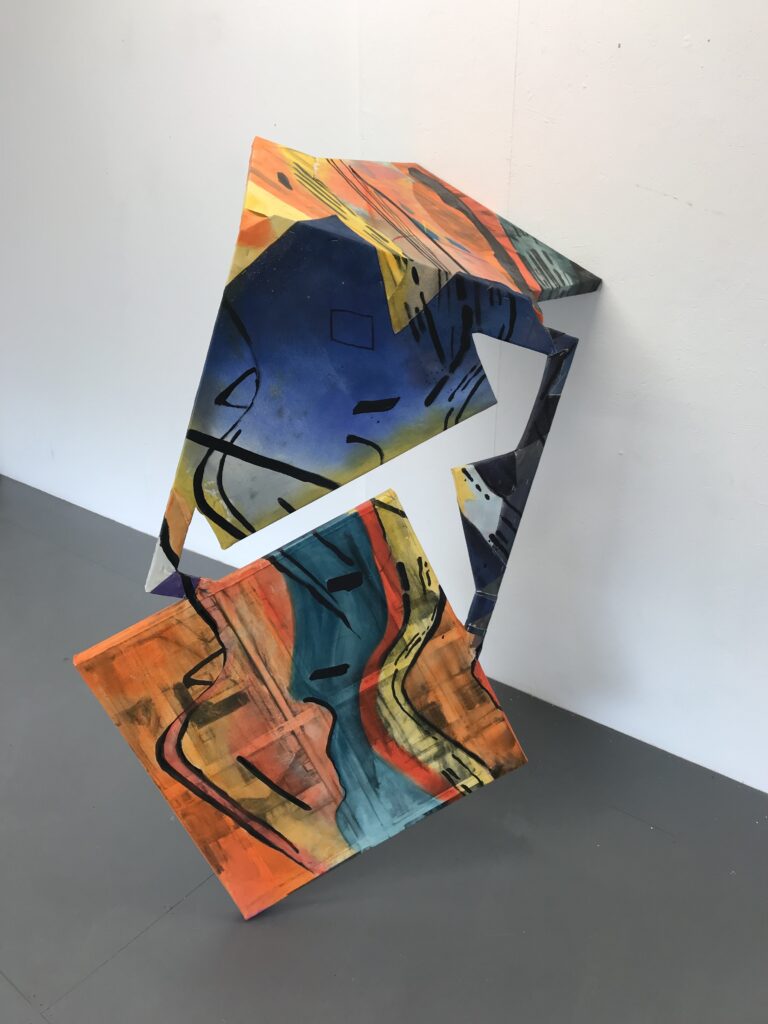
Leslie: Which landscapes influence your work? Why them, rather than other landscapes?
Stuart: It’s the idea of the landscape that really interests me, and how we perceive it. I have always been inspired by the sublime in the landscape, whether this was the mountains of the Lake District, the architecture of Manchester and Leeds or my experience of walking and running in the landscape. These all feed into my thinking when making my artwork. I am a big fan of J.M.W. Turner, John Martin, John Virtue and Anselm Kiefer and their epic paintings.
Leslie: How do music and science affect your work and your life? What are the seminal songs/theories for you? Why them?
Stuart: Music is a big influence; I use it to tap into a more creative ‘free’ state when painting in the studio. Particularly David Bowie (his last album ‘Black Star’) and Radiohead help me take risks and not worry too much about what or how I’m painting. Science also influences me, especially environmental science, geology, the climate crisis and the Anthropocene. I was part of the annual Creative Reactions event in Cambridge connected to the Cambridge University linked international festival, Pint of Science for about three years. I collaborated with a range of scientists including Volcanologist Clive Oppenheimer, utilising art and science research to work towards a series of ambitious paintings based on his and the Cambridge University team’s research into Mount Erebus on Ross Island, Antarctica. The artwork produced was exhibited and the scientist and I delivered talks and presentations during the event evening and then the artwork was exhibited as part of the Creative Reactions exhibition at the end of the events. The artwork I produced in response to my own research and the research of Oppenheimer and Cambridge University has been published in: Monteath, C, 2023,‘Erebus The Ice Dragon, A Portrait of an Antarctic Volcano’, Massey University Press, Auckland, New Zealand, ISBN: 9781991016362.

Leslie: What are the challenges faced by a modern artist who wants to create original work? What do you see as your own signature style?
Stuart: The challenges are surviving as an artist. It has taken me many years to cultivate an art practice and generate space and time to produce art. This is crucial as the process of making art, taking risks and trying new ways of working in isolation is key until you feel you have found your own ‘style’- but I prefer to avoid this term as a ‘style’ can be its own trap and you need to constantly find new ways of working to keep your practice, fresh and evolving, otherwise repetition and boredom sets in. The lack of affordable studio spaces and exhibiting spaces is a real issue. Sustaining a practice as an artist is the most difficult challenge – and just keeping going. It’s about turning up for the work and making work regardless. I don’t really have a signature style but I do feel I have an identifiable aspect to all my artwork produced, whether through the thinking behind it or the physical surface and subject matter of the paintings.
Next week I interview Hannah, The Sewing Songbird.
ABOUT LESLIE TATE’S BOOKS:

I interviewed Lisa Dart, finalist in the Grolier, Aesthetica and Troubadour Poetry Prizes and author of The Linguistics of Light (poems, Salt, 2008), Fathom (prose
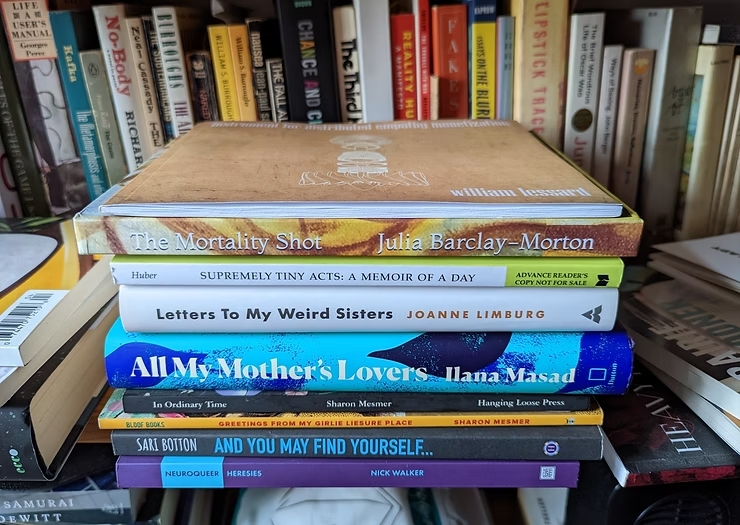
I interviewed writer Julia Lee Barclay-Morton about her experience of autism. Julia began as an experimental dramatist in New York, moving to the UK to

I interviewed Gillean McDougall from Glasgow, who edited the collaborative projects Honest Error (on Charles Rennie Mackintosh and his wife Margaret Macdonald) and Writing the
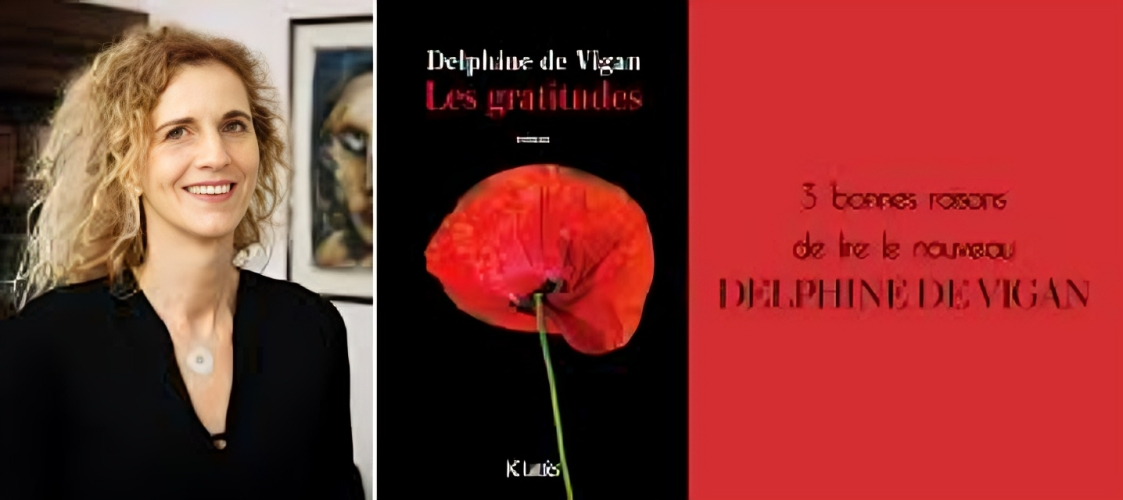
I interviewed French writer Delphine de Vigan, whose book, No et moi, won the prestigious Prix des libraires. Other books of hers have won a clutch
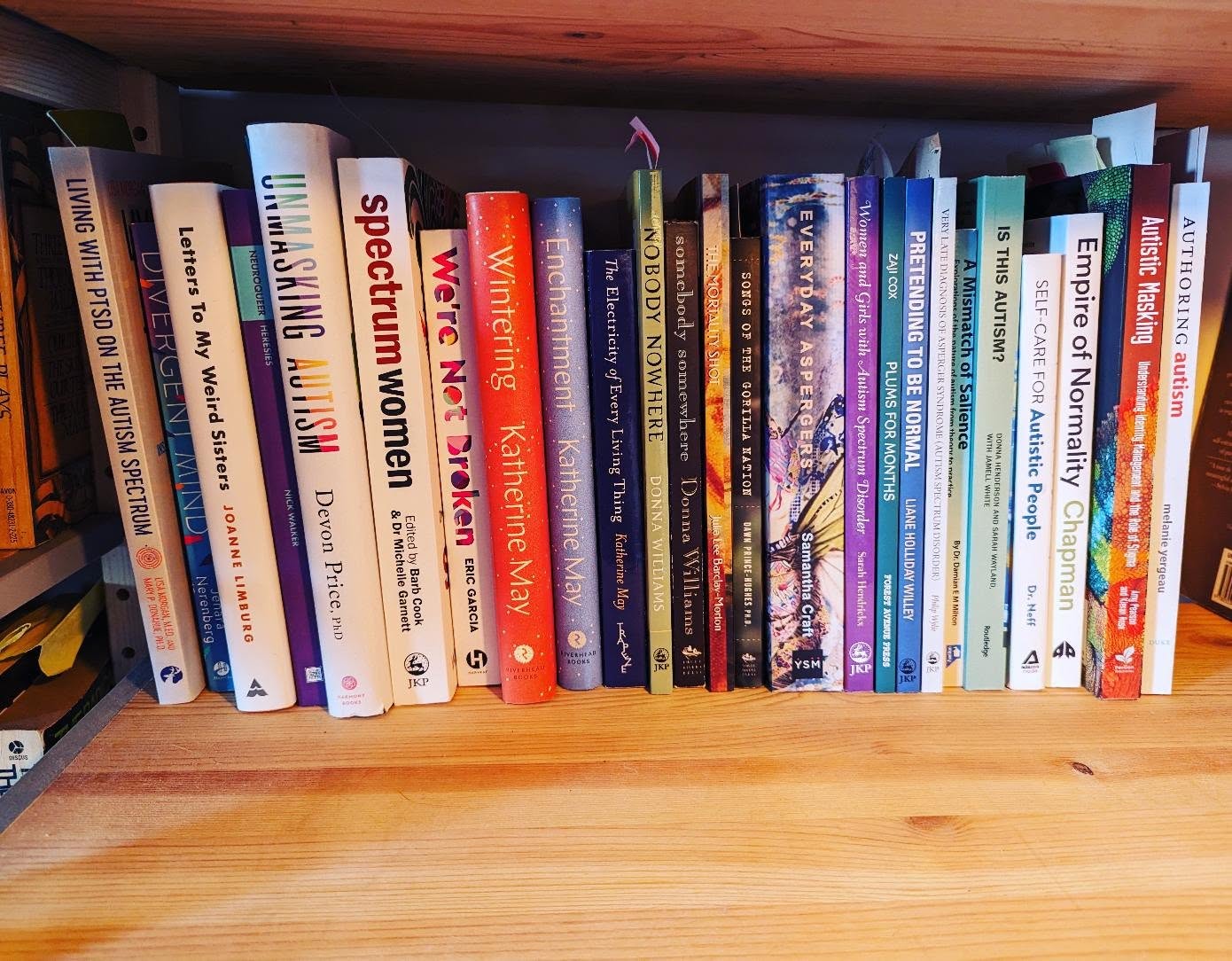
I interviewed Joanne Limburg whose poetry collection Feminismo was shortlisted for the Forward Prize for Best First Collection; another collection, Paraphernalia, was a Poetry Book Society Recommendation. Joanne
| Cookie | Duration | Description |
|---|---|---|
| cookielawinfo-checkbox-analytics | 11 months | This cookie is set by GDPR Cookie Consent plugin. The cookie is used to store the user consent for the cookies in the category "Analytics". |
| cookielawinfo-checkbox-functional | 11 months | The cookie is set by GDPR cookie consent to record the user consent for the cookies in the category "Functional". |
| cookielawinfo-checkbox-necessary | 11 months | This cookie is set by GDPR Cookie Consent plugin. The cookies is used to store the user consent for the cookies in the category "Necessary". |
| cookielawinfo-checkbox-others | 11 months | This cookie is set by GDPR Cookie Consent plugin. The cookie is used to store the user consent for the cookies in the category "Other. |
| cookielawinfo-checkbox-performance | 11 months | This cookie is set by GDPR Cookie Consent plugin. The cookie is used to store the user consent for the cookies in the category "Performance". |
| viewed_cookie_policy | 11 months | The cookie is set by the GDPR Cookie Consent plugin and is used to store whether or not user has consented to the use of cookies. It does not store any personal data. |